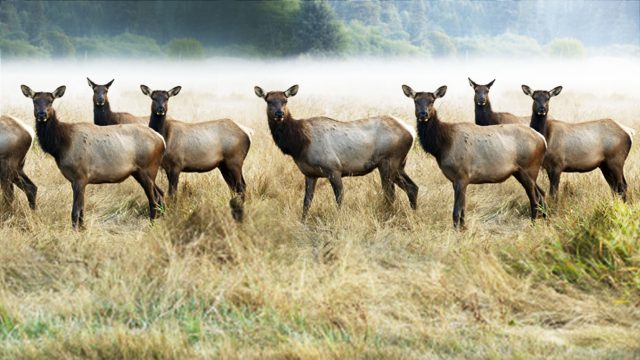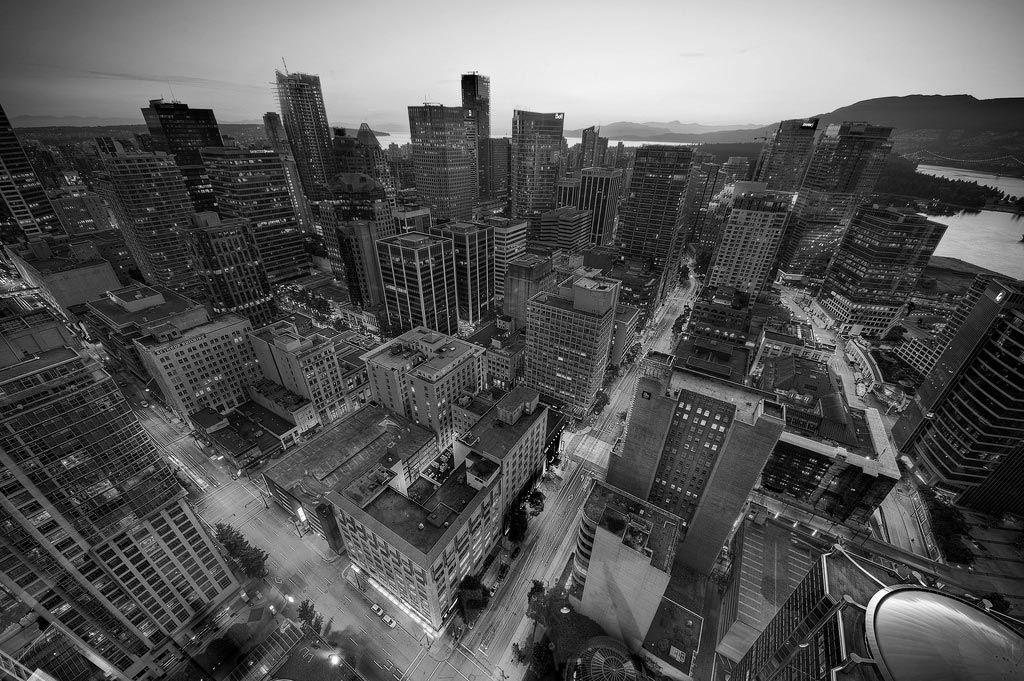On a clear day, the city I live in is in view of two mountain ranges. Considerably better known is the Cascades, with Mount Rainier looming over us all with its volcanic threat. However, when Disney came to Washington State for a True-Life Adventure, the cameras went into the wilds of the Olympic Peninsula, northwest of me. The Olympics are a little pocket mountain range, and no road goes through its heart. What goes through the Olympics goes on foot. Nearly seventy years ago, Disney chose to show us the trek of the elk.
During the winter, the elk don’t go into the mountains any more than the rest of us do. The Olympic Peninsula is a temperate rain forest, and at a certain elevation, that means snow. There are glaciers there, even now. During the spring, just after the elk calves are born, the herds make their way through the forest and up the mountains’ slopes to the peaks where they will find food all summer. Western Washington seldom gets all the way to hot, but it’s definitely cooler up there for the elk.
This is a year in the life of Olympic elk, all in about half an hour. There are, as is generally the case for True-Life Adventures, no humans here. So far as I know, humans have never lived in this part of the state—life’s great there for elk, but the coast is much easier for human food. This is a migratory land; even the elk don’t stay on the peaks all year, because snowfall up there is heavy. So we see the cows and calves climbing the mountains, some of the lightheartedness of spring, autumn’s gathering into what the short calls “harems” of cows, and a battle between two bulls, neither of whom end up mating that year. While they battle, the cows wander off with other bulls.
As is frequently the case on these, we’re putting our own human expectations on the animals. It’s also true that the cows are treated as being completely without agency as the bulls decide who’s going to end up with whom. Still, for half an hour, it’s not bad, and there is at least some wonderful scenery there. Not the lush, moss-covered lowlands, of course, nor the foggy shores, but the mountains that may well be the most inaccessible part of Washington State. US 101 circles the peninsula, did in those days. And quite a lot of shipping goes through the Strait of Juan de Fuca to its north and into the Puget Sound to Seattle or up north to the Strait of Georgia and Vancouver. But into those mountains? Hikers, the US Forest Service, and the animals, mostly.
I’ll be honest—I don’t know if there’s still much in the way of bears on the peninsula. They show up in the short a couple of times, but I’m a lot more familiar with claims of cougars out of the Cascades. Wikipedia, though, says bears and cougars are in the Olympics. Coyotes. No wolves in over a century, but beavers and banana slugs and salmon and bald eagles. And apparently, the deer that we see in our yard, south of the peninsula but still on a rare fully clear day in sight of the mountains, are black-tailed mule deer. And the marmots that get a few minutes of the half-hour are Olympic marmots, the only full-on species of mammal endemic to Washington State and therefore our State Endemic Mammal. So now you know.
Someday, I’ll take the kids for a trip to the Olympic National Forest; pay for my gas money by contributing to my Patreon or Ko-fi!


